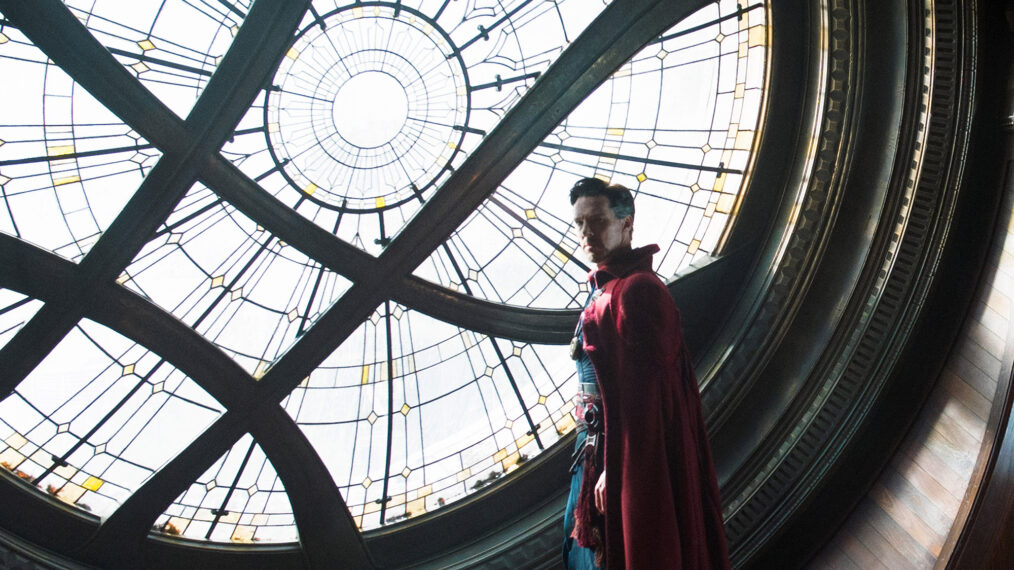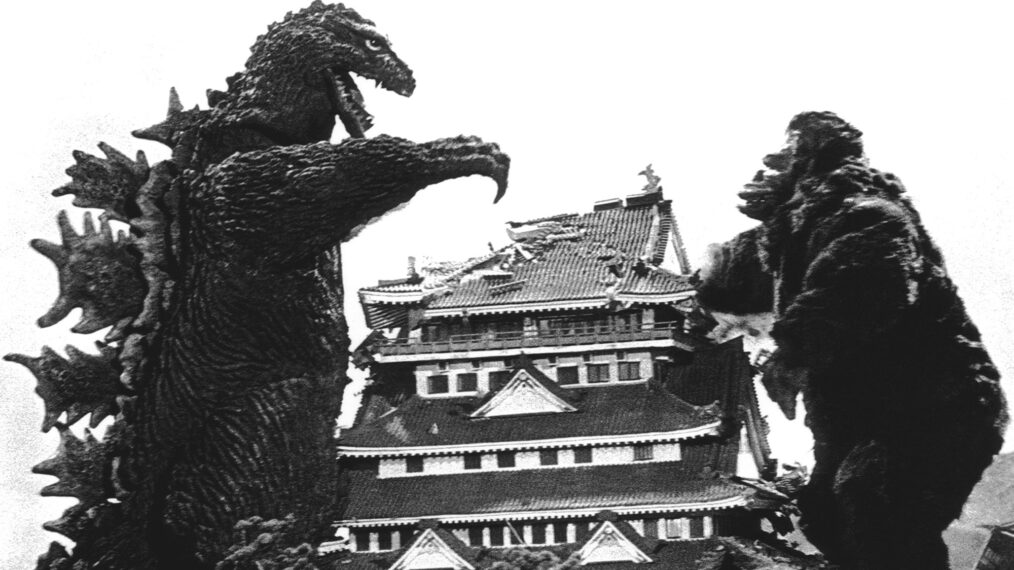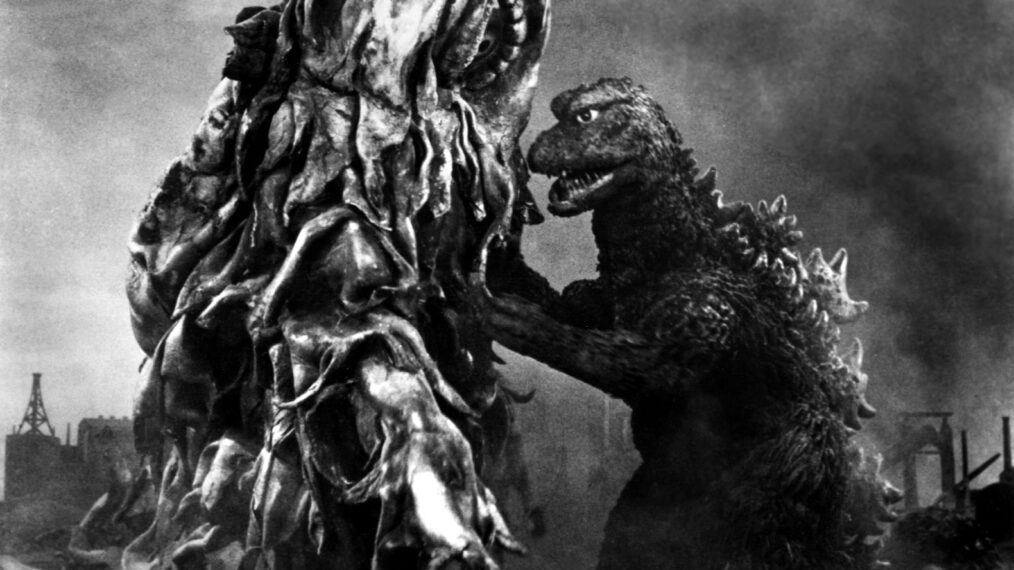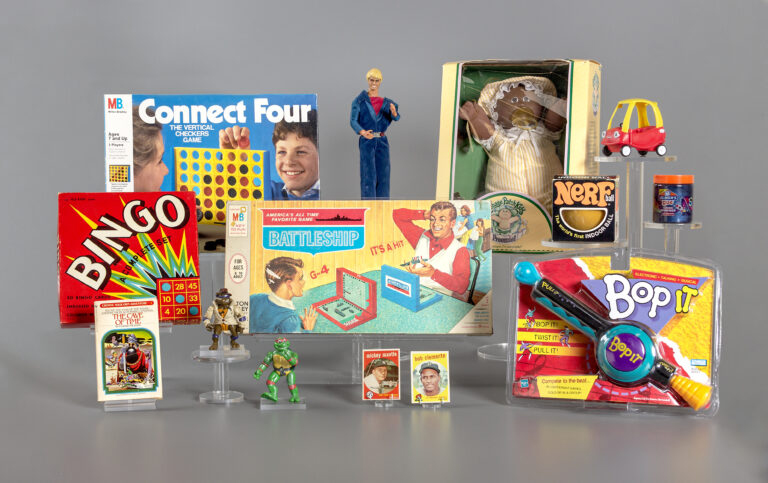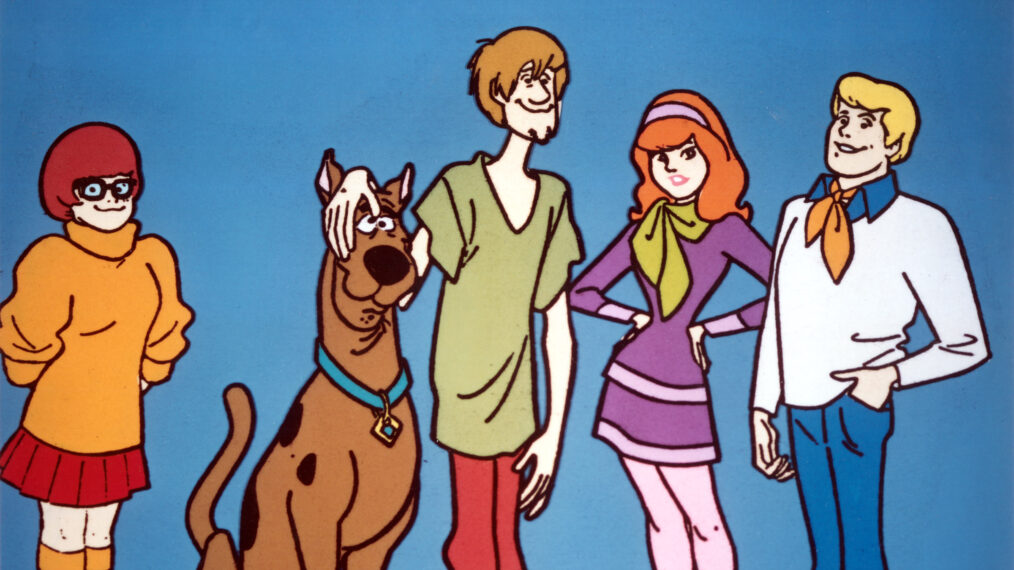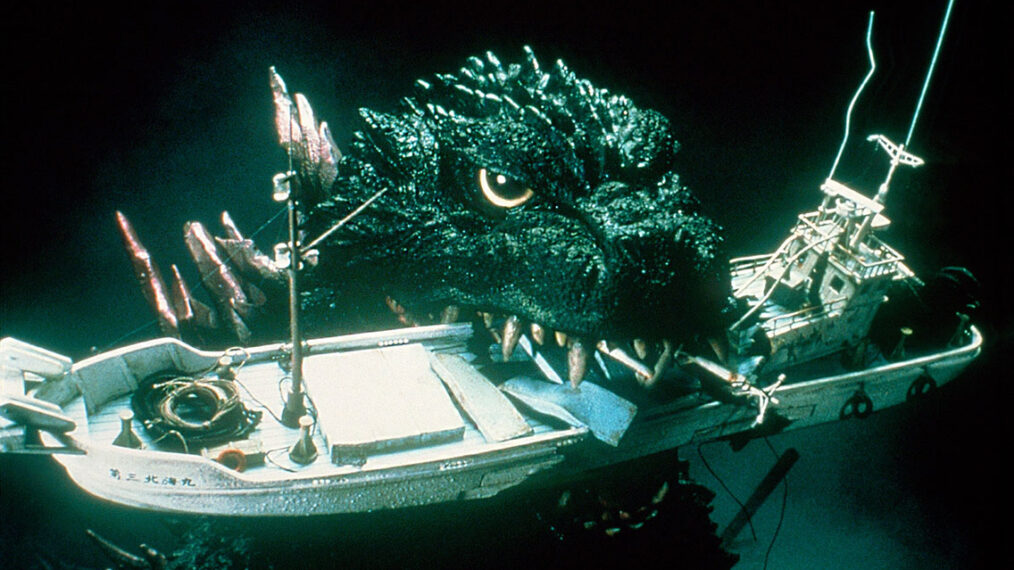Cartoons, Records, Toys & Marvel Comics: Godzilla’s Best Non-Movie Appearances of the ’70s
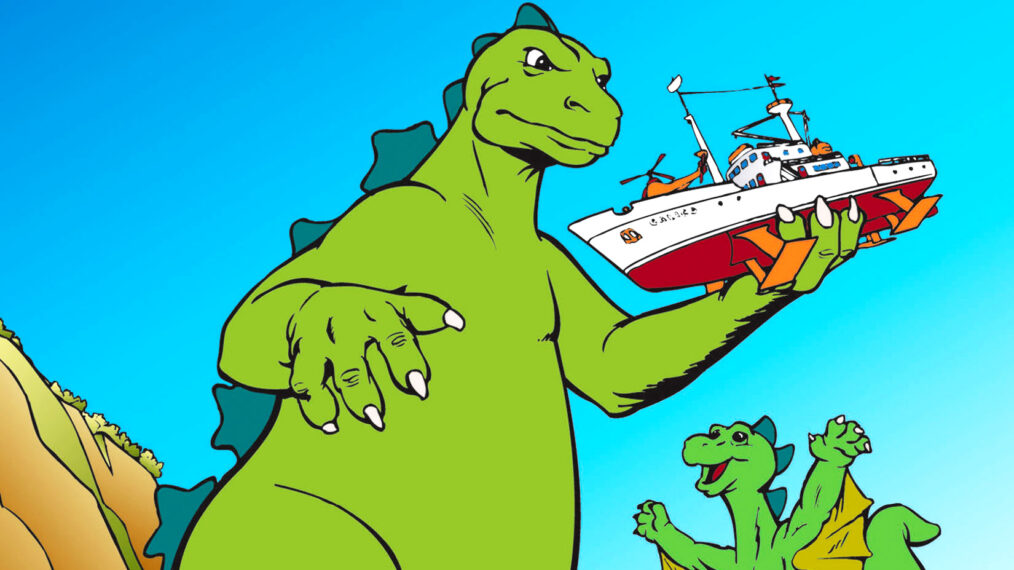
After the initial wave of Godzilla movies from Japan’s Toho Studios came to a close with 1975’s Terror of Mechagodzilla, there was a nearly 10-year hiatus before the beloved kaiju was back on the big screen, in 1984’s The Return of Godzilla (released in the U.S. the following year as Godzilla 1985).
But during this late ’70s/early ’80s drought of new big-screen Godzilla content, young fans of the monster, like myself, could still enjoy some of the earlier films on local monster-movie shows (the English-dubbed versions).
And there were other areas in which we could experience new Godzilla adventures, or imagine our own. The King of the Monsters was also King of All Media (or, at least king of all the media that kids might be into) at this time — you could find him gracing the cover of magazines like Famous Monsters of Filmland, starring in adventures in comic books, on records and on TV, and appearing in the form of toys and models (including a great glow-in-the-dark Godzilla model from Aurora that I wish I still had).
Here are some of what I fondly remember to be Godzilla’s most notable appearances in that non-movie media during the late ’70s, some of which I still have around to enjoy today.
Godzilla, King of the Monsters (1977-79 Marvel Comics comic book series)
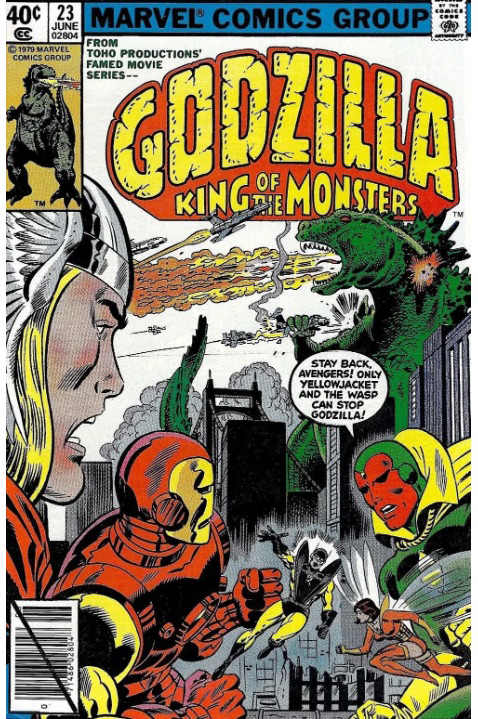
© 1979 Marvel Comics Group. Godzilla ™ Toho Co., Ltd.
While Godzilla will certainly never be part of today’s Marvel Cinematic Universe, he did exist for a two-year run in the world of the company’s comics and even came up against some of Marvel‘s most notable heroes.
In the comics, when Godzilla awakens and poses a threat to the world, S.H.I.E.L.D. leader Nick Fury tasks “Dum Dum” Dugan with commanding a Godzilla Squad to stop him.
Similar to how things have often worked in Godzilla movies, in Marvel’s story, Godzilla would on occasion end up as the lesser of two evils when he helped stop threats from other giant monsters. (Marvel apparently did not have the rights to use any other Toho monsters, so they created their own.)
After 24 issues of Godzilla, King of the Monsters, Toho’s asking price for Godzilla licensing apparently became too steep for Stan Lee and company, so the series ended. But it seems like it went out with a bang; the final two installments have the Godzilla Squad joined in their battle against the beast by a couple of Marvel supergroups: the Fantastic Four and the Avengers (consisting of Captain America, Thor, Iron Man, Yellowjacket, Wasp, Scarlet Witch and Vision).
I only remember having one issue of this comic that my grandmother had bought for me while I was laid up at home with chicken pox. I also recall that not long afterward, some jerk at my Boy Scout camp grabbed that comic from me and tossed it into the fire! So I guess there were a few reasons why this single issue remained printed on my brain.
Doing some research based on remembering that Marvel’s version of Hercules was featured on the cover, I found that the issue I had must have been #3. In the story, Hercules and other members of the Champions superhero team (also consisting of Black Widow, Angel and Iceman), as well as the Godzilla Squad, try to take down Godzilla.
There’s a nice rundown of that issue, as well as the others, at this link.
Godzilla, King of the Monsters (1977 Wonderland Records album)
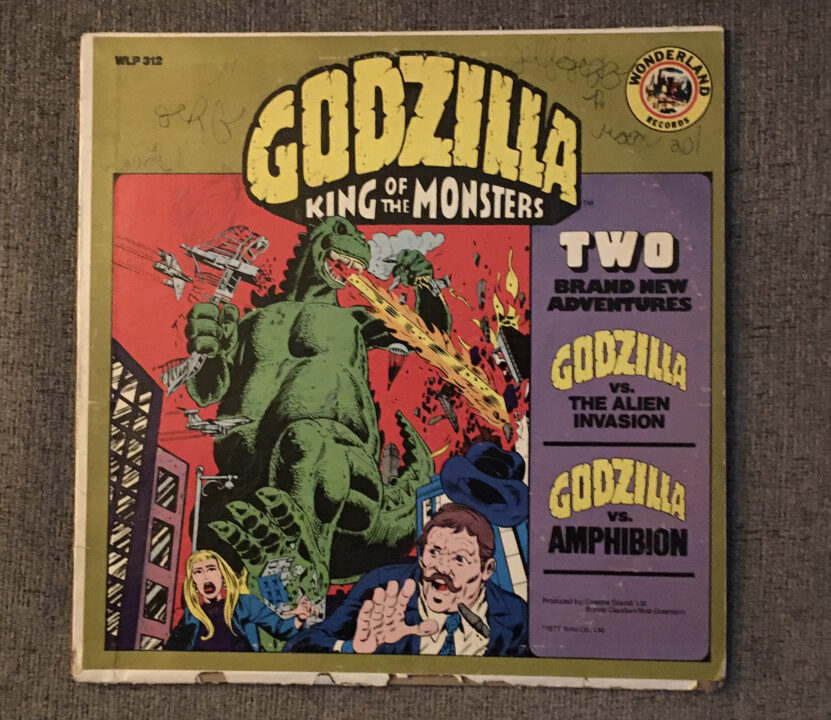
© 1977 Toho Co., Ltd./© A.A. Records, Inc. (author photo)

© 1977 Toho Co., Ltd./© A.A. Records, Inc. (author photo)
I got this record from Santa on Christmas morning in 1977. As you can see by the top photo, it is now a bit banged-up after 46 years. You can also see at cover’s upper part where I wrote my name a few times (not too adept at cursive writing at that point, I guess) and “Room 201.” I do recall bringing the record to school and playing it for something like show-and-tell or art class.
The artwork and title logo on the cover of this album looks to be a variation on the art featured on the cover of Marvel’s first issue of its Godzilla book. I’m guessing, based on that, that they were tied in together somehow, though I don’t see any Marvel credits on the album itself.
Each side of this record features a different Godzilla story, both running a little under 15 minutes. On Side A, “Godzilla vs. Amphibion,” Godzilla battles that title foe in the Bermuda Triangle. On Side B, Godzilla saves Earth from alien invaders.
The alien story always excited me most because it starts with Godzilla being sighted in Lake Michigan, which was just about a mile from my family home at the time. There were also mentions in the story of cities in the area that I was familiar with, like Milwaukee and Chicago, and I was amazed that a Godzilla story could take place where I lived.
Sometimes I’d let my imagination take over and look toward the east, the direction of Lake Michigan, and imagine what I would do if I did see Godzilla’s form suddenly rise on the horizon.
The voice acting and music on this record always stuck with me, and hearing it again, I’m impressed that the producers apparently had the rights to use Godzilla’s famous roar. It is the roar notably featured during the opening credits of the original 1954 Gojira, not so much the roar in later movies, when Godzilla became more of a hero than a threat. And that question of “threat or hero” exists in the stories on this album, as once again Godzilla saves the day from even greater dangers.
This album was among other “story records” I enjoyed back then, especially the ones put out by Power Records that featured various Marvel superheroes in adventures that you could read along with in the short comic books that were attached to the record, while also listening to the story (turning the page every time you heard a tone).
I still have some of those, as well, which is another good reason for me to finally get another turntable. Fortunately, thanks to some YouTubers, I am at least able to still listen to these records in some way, as you can hear in the videos below. (Note: The stories are mislabeled, the first one is actually “Godzilla vs. Amphibion,” and vice-versa.)
Shogun Warriors: Godzilla (Late ’70s Mattel toy)
Mattel’s Shogun Warriors line of toys was short-lived (produced mostly during 1979-80) but memorable. It mostly consisted of robots of various sizes, larger and smaller, based on characters in Japanese TV shows. Some of them could even shoot out their fists, which was pretty cool.
Especially cool, as far as I was concerned, was Mattel’s addition of Godzilla to this toy line. It stood a little more than 19 inches high, so it was a bit shorter than a usual larger-sized Shogun Warrior, which usually came in around 24 inches.
Size didn’t matter for me as far as Godzilla was concerned, though. Other attributes made up for it, including the ability to have him shoot out a “tongue” of fire from his mouth by lowering a switch on the back of his head.
And, of course, there was his flying fist of fury. This was one of those ultimate “You’ll shoot your eye out!” toys from the ’70s — by pressing a button on Godzilla’s right arm, you could launch his fist pretty much across a room.
I still have my Shogun Warrior Godzilla. While the switch on his head has broken off, I can at least pull out his tongue for the fire effect. Most importantly, though, his fist still flies very well. I tried it recently, and between its time in the air, followed by its bounce after landing, the fist ended up over nine feet away from its launching point.
Here are some nice commercials from the time hyping the Mattel Godzilla’s abilities:
Godzilla (1978-79 Hanna-Barbera Saturday morning cartoon series)
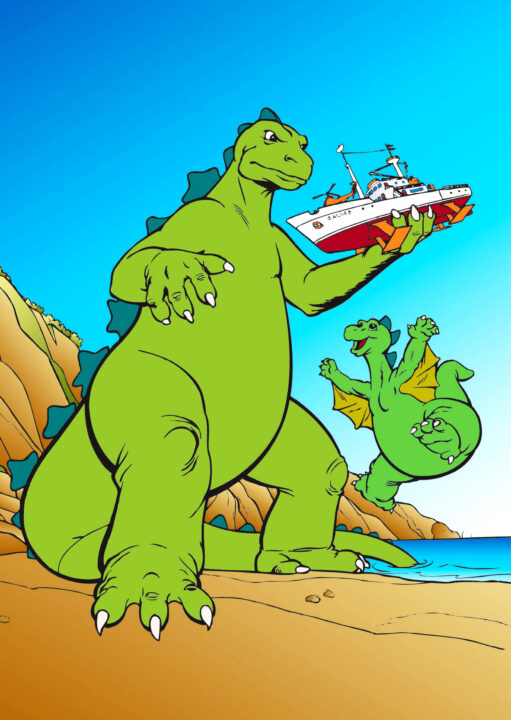
© Hanna-Barbera/Courtesy Everett Collection
This was one of my Saturday morning faves as a kid, even if Godzilla was tweaked a bit from what I had known from the movies.
The series followed the adventures of a group of scientists aboard a ship called the Calico, and whenever they would get in trouble, often from some other giant monsters, they could call upon Godzilla for aid with a signaling device, and he would instantly show up to save the day.
Godzilla’s atomic breath was altered to have him breathe fire like a dragon, and on occasion he could even shoot lasers from his eyes! Another big difference was in Godzilla’s roar. While Hanna-Barbera had licensed Godzilla from Toho, they apparently were not allowed to use his famous roar. I can’t remember what I thought of the roar when I was watching this show at 8 and 9 years old, but hearing it now, it is disappointing. It kinda sounds like some dude dry-heaving.
Then, of course, there was Godzooky. As if having Godzilla in a show wouldn’t be cool enough for kids, Hanna-Barbera felt the need to fill in the spaces when he wasn’t onscreen with some wacky comic relief in the form of Godzilla’s often cowardly nephew. The studio would kind of do the reverse the following year when they introduced the brave Scrappy-Doo as scaredy-dog Scooby-Doo‘s nephew.
Speaking of Scooby-Doo, if Godzooky’s grunting and various sounds similar to those made by the famed Great Dane, it’s because he, too, was voiced by the great Don Messick.
Hanna-Barbera’s Godzilla series ran two seasons in 1978-79. It began under the name The Godzilla Power Hour, which also featured episodes of Jana of the Jungle. For a couple of years after it ended, reruns of Godzilla were paired with shows featuring other H-B characters, in blocks with titles like The Godzilla/Globetrotters Adventure Hour, The Godzilla/Dynomutt Hour and The Godzilla/Hong Kong Phooey Hour. Of course, it was only right that Godzilla received top billing in each of these.
In the video below, you can see the first part of one of the episodes that gives a good sense of the show and its opening title theme, whose lyrics I’ve had in my brain for 45 years now:
The GODZILLA OFFICIAL by TOHO YouTube page has a playlist of all Godzilla episodes at this link.

